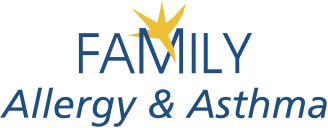How You Can Help This National Allergy and Asthma Awareness Month

It can be difficult for those who do not suffer from allergies and asthma to understand the daily management and obstacles faced by those who do. Every May, the Allergy and Asthma Foundation of America declares it National Allergy and Asthma Awareness Month to raise awareness for these diseases. Why May? May is typically peak spring allergy season making it the perfect time to help educate friends, family, and co-workers.
In the United States, 50 million people suffer from allergies and 26 million suffer from asthma, many overlapping. While there is no cure, allergies and asthma can be managed with proper treatment and care. Research has improved medication and management over the last 50 years. However, these diseases still claim the lives of people every day.
Why Allergies and Asthma?
“Allergic Asthma” is the most common form of asthma. The majority of people who suffer from asthma also have allergies that may trigger asthma symptoms.
Allergy symptoms often include:
- Sinus Congestion
- Runny Nose
- Post-Nasal Drip
- Sneezing
- Coughing
- Itchy or Watery Eyes
Common asthma symptoms are:
- Coughing, especially at night, with exercise, or when laughing
- Trouble breathing
- Tight feeling in the chest
- Wheezing – a squeaky or whistling sound
In these cases, knowing what you are allergic to is one of the first steps in avoiding an allergy attack and managing your asthma.
Three Things You Can Do to Help This Month
1. Tell Your Story
Whether in person or on social media, share your experiences living with and managing allergies and asthma. Talking about your experiences can help friends and loved ones understand the seriousness of an allergic reaction or asthma attack. Share your story with your local government or school board. Speaking out can contribute to creating better policies to keep you and those you love safe.
You can also join a community or support group, these also can be found online. These can be great resources for emotional support, additional information on allergies and asthma, and even trading recipes and shopping tips. You can find a local AAFA group, FARE group, or other patient support organizations from the American College of Allergy, Asthma, & Immunology.
2. Share Resources
Help educate others by sharing resources. Family Allergy & Asthma has resources available right here on our website, as well as brochures and information sheets in our offices. The CDC has also gathered some great resources to help take control of your asthma or raise awareness.
For more information on allergies, asthma, and other immunological disorders check out these organizations:
American College of Asthma, Allergy & Immunology: www.acaai.org
American Academy of Asthma, Allergy & Immunology: www.aaaai.org
Food Allergy Research & Education: www.foodallergy.org
Asthma Allergy Foundation of America: www.aafa.org
International FPIES Association: www.fpies.org
American Partnership for Eosinophilic Disorders: www.apfed.org
Many of these organizations also have social media presences that make it easy to share and stay up-to-date with current information.
3. Stay Up-To-Date
Take time out this month for a refresher course on you or your loved one’s allergy and asthma action plans. If this includes using an epinephrine auto-injector, use your trainer to practice the steps or read the instructions to keep them fresh in your mind. You can also stay up-to-date on advocacy efforts and research going on in your area. The AAFA Action Network is a great resource to monitor local legislation on research funding, access to care, and general public policies involving allergies and asthma. FARE lists clinical trials all over the country and looks into the ongoing FAA Research Institute studies.
If you have questions or if your allergies and asthma are not under control, schedule an appointment with our allergists to help get you back on track.

